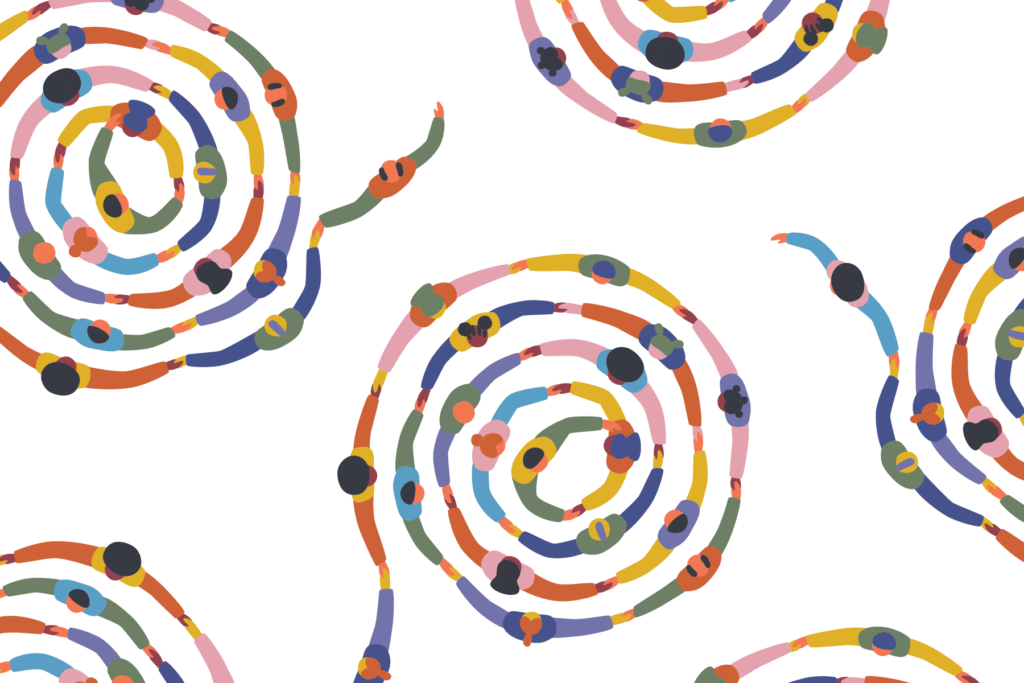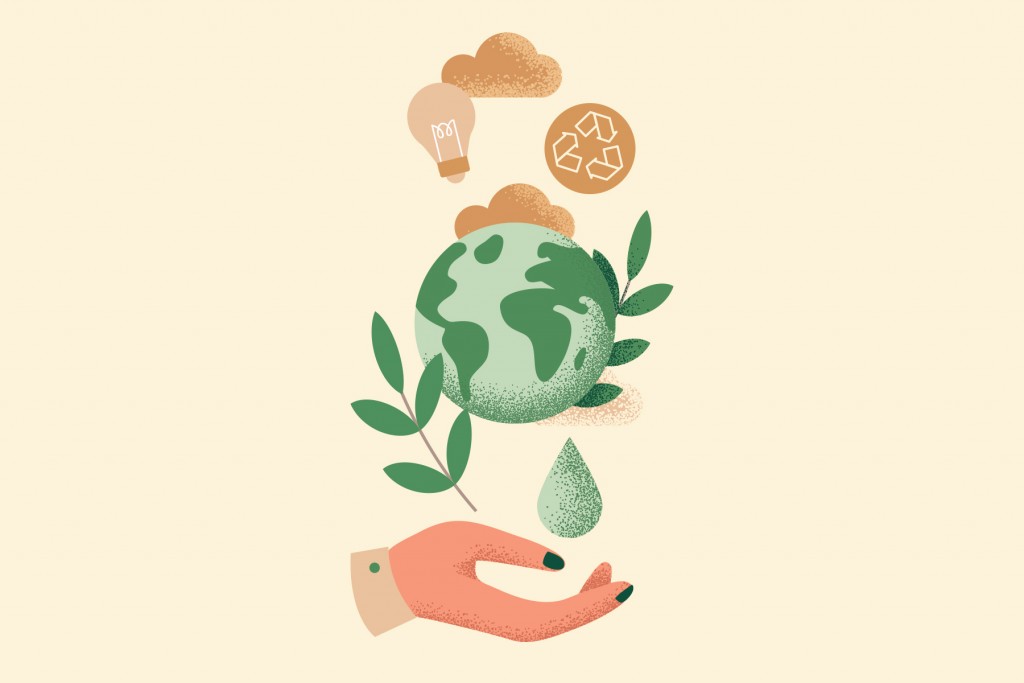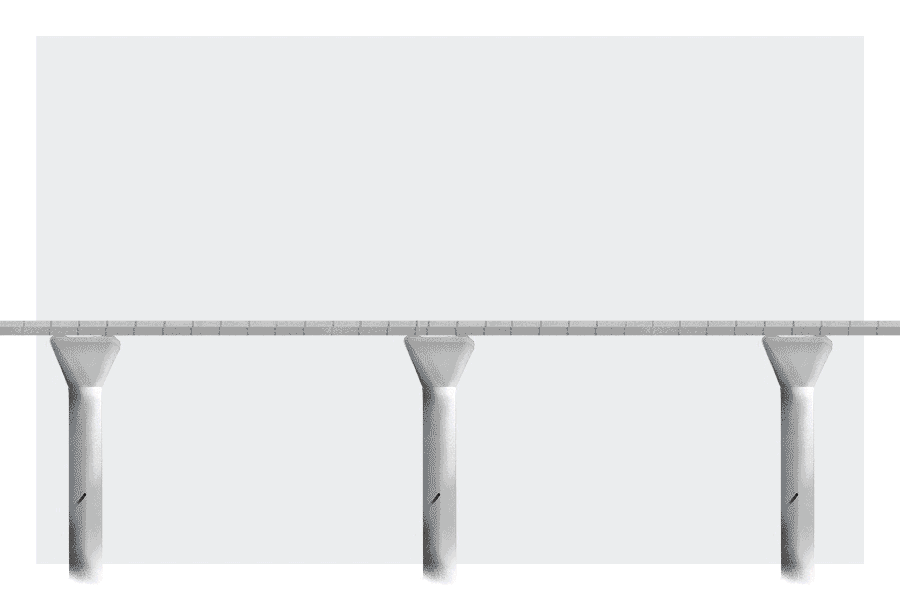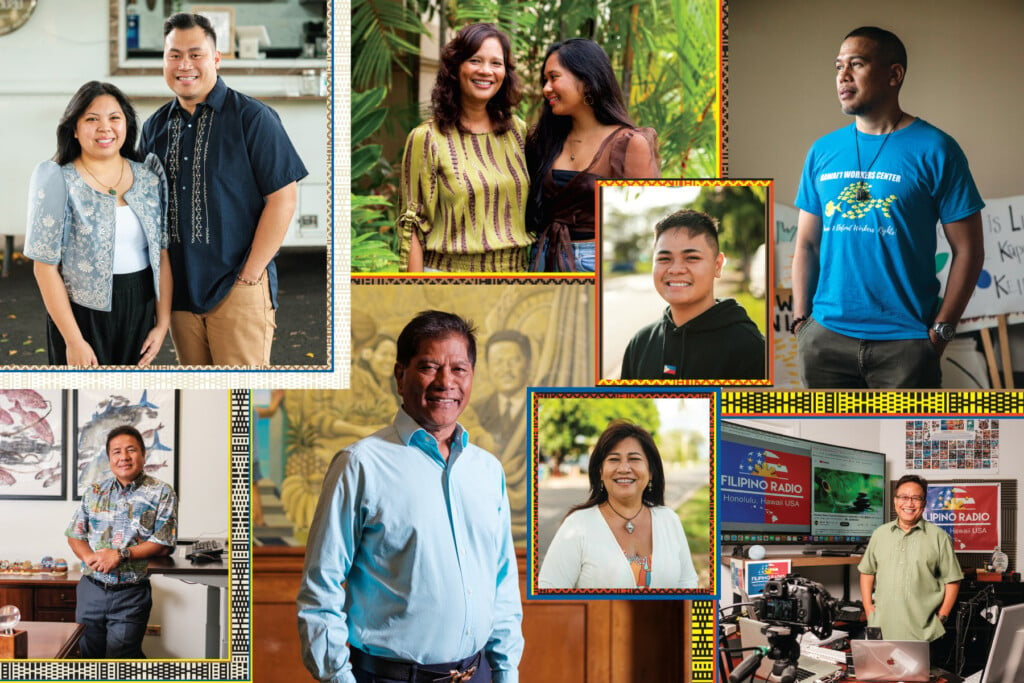Implicit Bias: A Three-Part Report
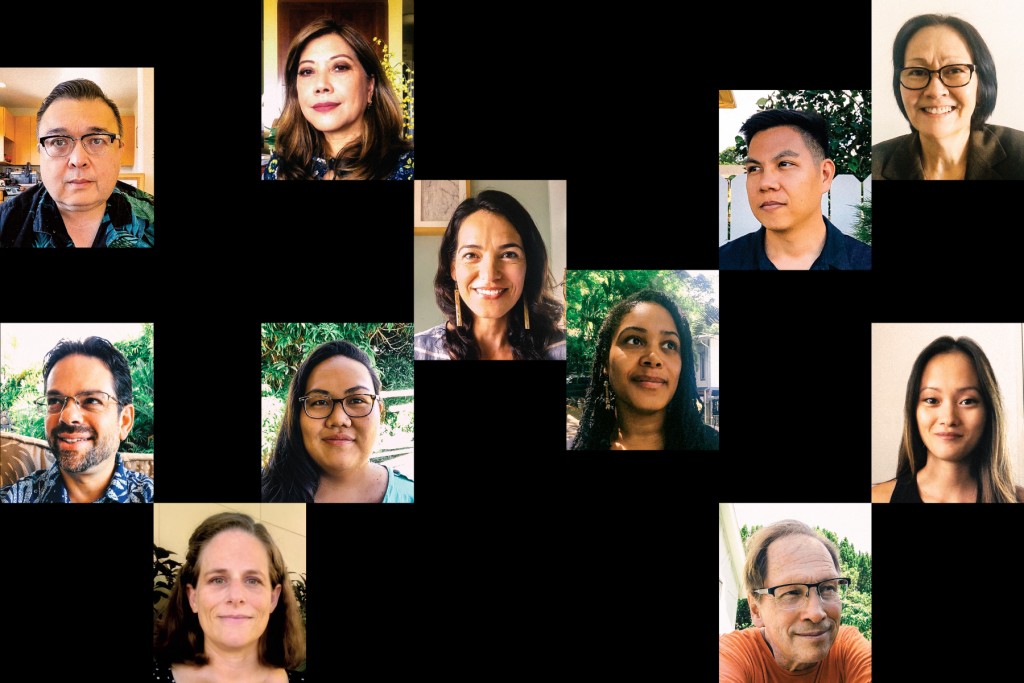
Part I examines implicit bias in Hawai‘i. Part II offers ways for individuals to counter their own implicit biases. (One step: Learn to recognize biases rather than deny them.) And Part III looks at how organizations can improve their hiring, promotions, culture of inclusion and more.
Part I: Examining Implicit Bias in Hawaiʻi
 I’m not from Hawai‘i, but people often assume I am because I’m Asian with tan skin and dark hair. So I’m often asked where I went to high school or what island I’m from when I meet new people.
I’m not from Hawai‘i, but people often assume I am because I’m Asian with tan skin and dark hair. So I’m often asked where I went to high school or what island I’m from when I meet new people.
Rebecca Stotzer, who has been a professor at UH Mānoa for 13 years, has a different experience. She’s white, so many people assume that she doesn’t belong here, and she’s often asked how long she’s going to stay.
Stotzer and I are both from the Mainland, but the people who ask us these questions are probably not aware that they are automatically ignoring the fact that tan Asians can be from elsewhere or that White people can be born and raised in Hawai‘i.
These are examples of implicit bias, which is otherwise defined as the positive or negative stereotypes, assumptions and attitudes that we harbor toward a person, thing or group. These thoughts are subtle; you might not even notice them because they are often outside our conscious awareness. They can influence how you think about race, gender, ethnicity, sexual orientation and other social categories.
Having a negative implicit racial bias doesn’t automatically mean you’re racist. Implicit biases are learned associations that stem from our experiences and the societies and culture that surround us – and that includes systems of discrimination and racism.
But they do influence how you see the world and how you act, so despite your best intentions, you might not treat or view everyone equally. In fact, implicit biases can have a domino effect: They can influence decision-making without our awareness and result in disparities in employment, health care, criminal justice and many other areas.
“These implicit biases that we have about other people, when we don’t recognize them, that we may have them, that’s the most dangerous thing,” says Sabrina McKenna, a Hawai‘i Supreme Court associate justice.
Implicit biases are challenging to overcome because they are learned and reinforced by our environments. Addressing our implicit biases requires both individual and systemic attention, say experts interviewed for this story.
“I think it’s critical for everyone, you know, human resources people, leaders, teachers, I don’t care who it is. I think everyone needs implicit bias training because I don’t think people are aware, I don’t think everyone is aware of how pervasive an issue this is in general,” McKenna says.
Defining Implicit Bias
It is important to understand the difference between an immediate response and more active, deliberate thinking. An implicit bias is an automatic or immediate response, as opposed to a response that is slower, more controlled, says Justin Levinson, a professor at UH’s law school and a leader in the field of implicit bias.
That means it’s easier for these biases to surface – and for them to impact decision-making – when we need a cognitive shortcut, such as when we’re busy at work, under a time crunch or stressed out, such as during a pandemic, says Rebecca Stotzer, professor and director of distance education in UH Mānoa’s School of Social Work. We are able to keep these biases in check when we’re more engaged with our thinking.
“In those moments where you’re just at the bus stop and somebody walks up to you and you’re like ‘Oh, maybe they’re standing a little too close’ and you’re deciding whether or not to move away or not, like you’re not thinking about diversity in that moment and those are the places where implicit bias has an opportunity to creep up and seep into our behaviors.”
The purpose of implicit biases, says Stotzer, who studies prejudice, discrimination and bias crimes, is to help us navigate the world in streamlined ways so that we don’t have to use a lot of mental energy on simple tasks and can instead save cognitive resources for the big things we need to think about.
“It’s a wonderful thing, in that regard, having schemas and automatic associations,” Levinson says, but the problem is when “we start to learn categories for things that shouldn’t have categories, or we have associations of people or groups that are based upon stereotypes or based upon things we’ve learned in a culture and that those things are not accurate reflections of who we want to be as people or as a society.” So when they’re not accurate reflections of what an egalitarian society would do, “then it’s a big problem,” he adds.
Implicit biases can influence how we think about race, gender, ethnicity, sexual orientation and other qualities. For example, studies by Levinson and his colleagues have found that American participants implicitly associate photographs of White faces with value and leniency and Black faces with worthless and retributive concepts. Another of his studies, which is summarized in “Implicit Bias in Hawai‘i: An Empirical Study,” found that Hawai‘i participants tended to implicitly favor Japanese Americans over Micronesians and associated Japanese Americans with good and Micronesians with bad.
You can be aware of your implicit biases, though not always. Implicit bias is often called unconscious bias, but Levinson says that academics don’t like that term because a person can have a strong implicit bias and still be aware of it. For example, implicit association tests measure how quickly individuals can associate certain concepts with stereotypes or evaluations. A person can recognize their implicit bias if they realize they’re having a harder time associating the words “woman” and “scientist” than “man” and “scientist.”
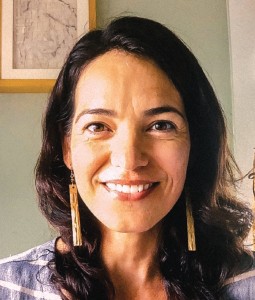
The problem with implicit biases, however, is that despite your intentions to treat everyone fairly and equally, you might not actually do so.
“Implicit biases (which are thoughts) can lead to an individual behaving in a way that discriminates or is prejudiced toward different race/ethnic groups,” writes Rebecca Delafield, an assistant professor in the Department of Native Hawaiian Health at UH’s medical school, in an email.
We Are Not Born with Biases
Delafield adds that implicit biases, including racial ones, are not inherent. Rather, they are learned associations influenced by the contexts and environments we are exposed to.
“We are not born thinking one color of skin is inferior to another or thinking that one sex is weaker than the other. These ideas are manifested in our environments that are shaped by structural racism (and sexism … other common isms) and they are learned through the messages communicated and reinforced through formalized policies, institutionalized cultures, media, and informal/tacit conversations and dialogs, etc.,” she says.
But having an implicit bias, whether racial, gender or otherwise, doesn’t mean you are racist or sexist. Stotzer cites the example of a police officer responding to a shooting in Las Vegas, which she heard about in an episode of the public radio program “This American Life.” The officer initially thinks the shooter would be a White male because that’s what his training taught him, so when he comes across a young White woman who is not running away like everyone else, he pauses. The officer and woman then exchange gunfire.
“The moment that he paused to go ‘What?’ was the moment that implicit bias jeopardized his life. … He could have been shot and killed because he needed that extra second to process what was happening because it violated his assumption about who an active shooter was,” Stotzer says.
“That’s where it’s really clear. He’s not a sexist, he’s not a racist. That’s just the message that had always been told to him in every training he’d ever been in.”
The good thing about knowing that these biases exist is that there are tools to address them.
Implicit biases are inevitable in the sense that “they’re going to be formed based on what exists in our environment,” says Kristin Pauker, an associate psychology professor at UH Mānoa and director of the campus’s Intergroup Social Perception Lab. “So if we can change patterns in the environment, then we can change the existence of biases or maybe make them not slanted in one direction.”
Wide Impacts
The problem with implicit biases is that they can influence our decision-making without us knowing it – and they can have a wide impact. Decisions influenced by bias can lead to continued disparate gender, racial, ethnic and other outcomes that we already see in our criminal justice, employment and health care systems, Levinson says.
“That’s why raising awareness is important as a first step, and taking responsibility becomes crucial,” he says. “If you use it to excuse your behavior, then it’s counterproductive. You have to become aware of it and recognize we have a responsibility to address those things, even if it’s not our fault.”
Research has shown that, in general, physicians show a pattern of pro-White bias when comparing White and Black racial groups, Delafield writes, adding that several studies have also found evidence of an association between implicit bias and poorer patient-provider communication.
“This is an important and growing area of research because of the persistent health disparities observed between White and racial/ethnic minorities in the U.S.,” she writes, adding that “some studies have also found a relationship between implicit bias levels and differential treatment or diagnosis for minority patients, but not all studies. The mixed results may reflect differences in study design and context.”
Locally, Delafield has completed a dissertation focused on factors that influence disparities in cesarean delivery rates between White and Micronesian women in Hawai‘i. Her findings are not yet published in any peer-reviewed journals but they do show “a slight but significant preference for Whites compared to Micronesians … among the 29 OB-GYNs” who participated in her study, she says.
Delafield adds that the study might have underestimated the bias because the sample was small and had a large percentage of resident-level physicians, who tended to have lower bias scores than attending-level physicians. She says a larger study that was just completed will soon provide results from a broader range of health care providers and medical students.
She says it’s possible that implicit and explicit biases are playing a role in the disparities in coronavirus case rates among Filipinos and non-Hawaiian Pacific Islanders in Hawai‘i. At the end of August, non-Hawaiian Pacific Islanders, who make up 4% of the state’s population, made up 30% of the confirmed coronavirus cases. In June, Filipinos, who make up 16% of the population, made up 21% of cases, though recently their case count more closely matched their population size.
The pandemic, she writes, is exacerbating longstanding problems such as chronic underfunding of the public health and education systems, fractured health care systems, and poor data collection and management. Therefore, communities that have been treated inequitably and have fewer opportunities for quality education, less access to health care and lower paying – but essential – jobs are being impacted disproportionately.
“It will be something I will be thinking about as we get more data on hospitalization, deaths and recovery for people who contract COVID-19, but also in regard to the economic consequences of the shutdown and the eventual recovery efforts,” Delafield writes.
Effects on the Job
In a workplace, implicit bias can influence who’s hired, promoted, given good performance reviews and fired. For example, hiring managers’ first impressions of job candidates can be influenced by where applicants live or, at least in Hawai‘i, where they went to high school. Several years ago, some of Levinson’s students did a class project where they changed what high schools were listed on recent college graduates’ resumes and sent them to employers. They found that candidates with private schools on their resumes received more callbacks for interviews than public school candidates with otherwise similar resumes.
“A person’s high school would not in most places be a relevant measure of their ability to take on a job as an adult many years later,” Levinson says. “But yet, it’s very common in job hiring and resumes here to have access not just to a person’s address but where they went to high school and that’s actually a local norm in resumes that does not exist in a lot of other places.”
Researchers are still trying to understand just how implicit bias works in Hawai‘i. A couple of studies by Levinson and other researchers, which used UH students as participants, have found that a darker-skinned perpetrator is more likely to be found guilty than a lighter-skinned perpetrator and that people implicitly associate Black faces with the word “guilty” and White faces with the word “nonguilty.” These studies are also summarized in “Implicit Bias in Hawai‘i: An Empirical Study,” which is available for purchase online at tinyurl.com/Hawaiibias. Levinson says these studies are just the beginning of learning more about how implicit bias functions here.
“I think the first takeaway is that despite the fact we have a diverse society that we can and should be proud of, that diversity does not shield us or protect us from unwillingly perpetuating inequality or harm through systems that are designed to perpetuate fairness and equality,” he says.
Recent research by Stotzer in partnership with We Are Oceania, a collaborative project that supports Micronesians in Hawai‘i, found that 1 in 4 Micronesians in Hawai‘i have experienced discrimination at work because they are Micronesian. Another 1 in 10 experienced discrimination with medical or social services, and 1 in 13 with public accommodation.
“These findings suggest that bias and discrimination against people from the geographic region of Micronesia who live in Hawai‘i is prevalent and should be of concern to the larger community,” Stotzer wrote in the research brief. “The results of this project should encourage the people of Hawai‘i to reject all forms of bias whenever and wherever it occurs in the Aloha State in an effort to better support our diverse communities.”
Josie Howard, the program director of We Are Oceania and a native of Onoun, an island in Chuuk, says people will sometimes treat her differently if her attire hints that she’s Micronesian, such as by wearing mu‘umu‘u or a long, brightly colored skirt, which are often worn by Micronesian women. People might look at her and then immediately turn away while waiting at traffic lights on the way to work, or they might talk more slowly or enunciate their words when interacting with her. She’s received more warmly when she wears casual or business attire.
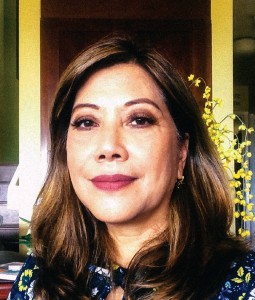 She adds that Micronesians are sometimes labeled as cockroaches and said to be dirty, lazy people who live in crowded homes and feed off the state’s systems. Those negative assumptions and stereotypes have caused some Micronesian residents to feel ashamed of their ethnicity and to mistrust those outside their community, Howard says.
She adds that Micronesians are sometimes labeled as cockroaches and said to be dirty, lazy people who live in crowded homes and feed off the state’s systems. Those negative assumptions and stereotypes have caused some Micronesian residents to feel ashamed of their ethnicity and to mistrust those outside their community, Howard says.
It’s a similar situation for some in Hawai‘i’s Filipino community. Bennette Misalucha was recently appointed to fill late state Sen. Breene Harimoto’s seat representing Pearl City and nearby areas. She’s now running for that seat. Misalucha says she’s seen some second-generation local Filipino Americans say they are Chinese and Spanish instead of Filipino because of the negative stereotypes they grew up with.
“That’s part of our community that sadly is there,” she says, adding that many local Filipino Americans are proud of their identity. “But it is a problem that continues, and I think if you talk to any Filipino community leader, they will acknowledge such as well.”
Part II: Dealing with our Own Implicit Biases
Addressing implicit bias is not easy.
It begins at the individual level with each of us reflecting on our thoughts and behaviors. But it also requires systemic attention because these biases are shaped by our social and cultural experiences.
“I think overcoming implicit bias is too optimistic,” says Justin Levinson, professor at UH’s law school. “Because if you think about where it comes from and how our entire lives have been part of a cultural system that creates these biases and perpetuates them – to then recognize that as an adult that we hold these biases – it’s very difficult, if not impossible, to completely rid ourselves of those massive cultural influences.”
However, people who are motivated to be egalitarian can improve themselves slowly over time with self-reflection and learning, he says. People can also try to recognize when they have preconceived notions about others, and replace those notions with something else. For example, if Levinson catches himself assuming that a student on campus is an athlete because of his appearance, he’ll replace that thought with one about the student being in a graduate level science program.
“These are small things, right – just doing that once or twice doesn’t do anything,” Levinson says. “But it’s teaching yourself over time and realizing that these things don’t go away and trying to improve upon yourself so that when you are making decisions that you realize that those decisions shouldn’t be impacted by those automatic assumptions.”
Rebecca Stotzer, professor and director of distance education in UH Mānoa’s School of Social Work, cautions that to effectively counter your implicit biases, you first need to recognize that you had the thought, and then have a sense of what to replace that initial assumption with. That’s where implicit biases are hard to remedy, she says.
She adds that a lot of people who consider themselves antiracist and value egalitarianism and diversity have a hard time with the idea that they have implicit biases. She recommends practicing mindfulness, which involves being more aware of your thoughts and acknowledging they’re there.
Sometimes, people immediately get defensive when they realize they’ve acted in ways that are inconsistent with their values, she says: “But mindfulness is about recognizing that sometimes random thoughts come up, or like those more hidden parts of you will come up, and you look at them and you don’t have basically this overly emotional reaction to them.”
She adds that addressing implicit bias also involves being more conscious of how we talk with other people so that we don’t perpetuate negative associations. For example, someone might associate bad teen behaviors, like vandalism and smoking at parks, with certain ethnic groups. If you’re part of that conversation, you could gently counter that person’s assumptions.
Stereotypical Jokes
Camaron Miyamoto, director of UH Mānoa’s LGBTQ+ Center, says the persistence of ethnic jokes and jokes that make fun of transgender and LGBTQ+ people contribute to the presence of implicit bias in Hawai‘i.
“The persistence of jokes that make fun of groups is something that I believe shows that in our culture in Hawai‘i we’re supposed to embrace those jokes that make fun of a group to show that ‘I’m part of the local culture,’ ” he says. “But at the same time, I believe it reinforces implicit bias by laughing and by retelling those jokes that we say are part of the local culture.”
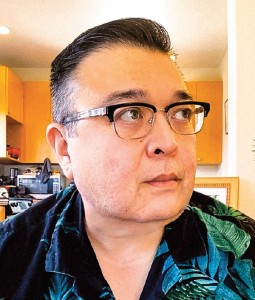 He adds that it needs to be more common for people at home and in the workplace to tell others, “I’m sorry, I didn’t see the humor in that,” or “What were you getting at there?” or “Ouch” to indicate that they don’t want to participate in that type of humor.
He adds that it needs to be more common for people at home and in the workplace to tell others, “I’m sorry, I didn’t see the humor in that,” or “What were you getting at there?” or “Ouch” to indicate that they don’t want to participate in that type of humor.
A person in a position of power can have an even greater impact in changing people’s associations. In his criminal law class, Levinson will use women criminals as examples in crimes that students assume are mostly committed by men. And in his corporate law class, he’ll talk about female CEOs and board members. He says he regularly notices that some students are slightly surprised.
“When you reach a position of influence within an organizational model, you can actually live and tell the egalitarian stories and make that part of the culture just with very basic things,” he says.
It’s also important to be aware of the situations where implicit bias could impact your decision-making. Sabrina McKenna, a Hawai‘i Supreme Court associate justice, says it’s important to act deliberately and consciously, especially if you’re strapped for time or under pressure. As a Family Court judge, she had to make many decisions about child custody and visitation issues; her decisions were based on the notes she took during proceedings, and from consciously weighing the facts on both sides and questioning whether she’d make the same decision if the genders were reversed.
“There is an implicit bias in favor of mothers when it comes to child rearing,” she says. “So it’s really, really important that judges, all of us think about these things. You have to consciously” look at the facts on both sides, then “switch genders, switch race, whatever, ethnicity,” and ask yourself, “would I be making the same decision?”
Another solution, Miyamoto says, is to simply get to know more people from various communities and learn that some of the assumptions we hold aren’t valid.
We Are Oceania, a collaborative project that supports Micronesians in Hawai‘i, for example, has trained government entities and schools to help them learn more about the Micronesian community and to dispel negative stereotypes and biases against Micronesians in Hawai‘i, says Josie Howard, program director.
“The more we get to know someone, the less we think of those implicit biases. … We recognize the person for who they are; we don’t think about the color of their skin, we don’t think about their nationality,” she says.
Long Way to Go
In some cases, implicit biases can be addressed instantaneously; in other cases it’s a lifelong process, says Makana Risser Chai, an attorney, trainer and HR consultant who teaches courses on creating respectful workplaces. She says people might become motivated to change their thinking once they receive insight into how implicit bias impacts other people; on the other hand, we may develop biases as we get older or as we are exposed to new groups of people for the first time.
Risser Chai, who moved to Hawai‘i from the Mainland 20 years ago, says that it might be harder to address implicit bias in Hawai‘i than in other places: “In Hawai‘i we tell ourselves that we aren’t biased, so if we keep telling ourselves that, we’re going to be even more unconscious of it.”
McKenna has been a judge in Hawai‘i since 1993 and has been aware since she was in law school of the potential impacts implicit biases can have in the legal system. But she says she wishes she were more aware of her personal implicit biases earlier in her career. She says she only recognized several years ago that she had an implicit bias about men and women in the workplace: Men belonged there, while women belonged at home.
“What’s really important is that we all recognize that we all have unconscious implicit biases even against ourselves and our own groups. … I have implicit biases against LGBT people,” she says, yet “I am LGBT. I have implicit biases. That’s the society I grew up in. I have implicit biases against darker people. That’s the society I grew up in. And it’s sad but it’s true. So the most important thing that we all need to do is recognize that we all have implicit biases.
“And it’s not everybody else’s problem. It’s our own problem.”
Part III: How to Address Implicit Bias on the Job
There are many examples of implicit bias in the workplace, including favoring applicants who graduated from private schools, rejecting an applicant because of his accent and ignoring a female colleague during a meeting but praising a male colleague for raising the same point.
Addressing this bias at the institutional level can include supporting implicit bias training, developing formal protocols to check and correct for biases, and examining how groups that face bias or prejudice are represented or absent within the organization and its culture, writes Rebecca Delafield in an email. She is an assistant professor in the Department of Native Hawaiian Health at UH’s medical school.
Workplace diversity and inclusion initiatives can also help by including more voices in decision-making that can help people catch and challenge their implicit biases individually and as a group.
“If done right, diversity and inclusion efforts in an organization help to challenge and remind people within organizations to check their biases,” says Ku‘ulani Keohokalole, owner and principal consultant of People Strategies Hawai‘i, which offers diversity and inclusion workshops and other training.
Raising Awareness
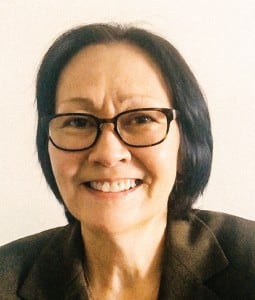 Hawai‘i Supreme Court Associate Justice Sabrina McKenna first learned she had an implicit bias about the roles of men and women – men belonged at work, women at home – while participating in a training session with other state judges several years ago.
Hawai‘i Supreme Court Associate Justice Sabrina McKenna first learned she had an implicit bias about the roles of men and women – men belonged at work, women at home – while participating in a training session with other state judges several years ago.
She says she was a little surprised she had this bias despite being a feminist. But the training she underwent helped her to recognize her implicit biases. Today, all state judiciary employees are required to participate in implicit bias training “– a requirement set by Chief Justice Mark Recktenwald.
Margarete Hester, communications and marketing co-chair for the Hawai‘i chapter of the Society for Human Resource Management, says implicit bias training should be done in small groups, with the disclaimer: What happens in training stays in training.
One exercise she did early in her career before coming to Hawai‘i involved a group of managers writing the stereotypes they associated with words like “White male,” “White female,” “Black male,” “Black female,” “disabled,” “lesbian,” “gay,” and “transgender.” Managers wrote these stereotypes on sheets of easel paper that were taped on the walls of the room, so everyone could see who wrote what.
“It was the most interesting and enlightening exercise that we had ever done because, number one, you’re in a room full of people, so everybody sees what you write on each sheet of paper,” says Hester, who is also a group HR manager at Enterprise Holdings Hawaii. Exercises like that, she says, force people into uncomfortable positions but also spawn honest conversations about why they had those stereotypes.
The exercise was part of a broader training program focused on diversity; likewise, implicit bias training can be done as part of a broader session on a topic like anti-discrimination, or on its own.
Bill Hoshijo, executive director of the Hawai‘i Civil Rights Commission, writes in an email that there has been more discussion about what does and doesn’t work in training, amid the #MeToo and Black Lives Matter movements. Those discussions, he says, have resulted in the development of “respectful workplace” training sessions, such as those developed by the Equal Employment Opportunity Commission.
Glory Gervacio Saure, area director of the EEOC’s office in Raleigh, North Carolina, and former director of the EEOC’s Honolulu office, says the purpose of the commission’s respectful workplace training programs for employees and leaders is to talk about harassment prevention and bystander intervention.
“I think instead of being reactive, we do need to be proactive and just find ways of how we can work with each other and identify the behaviors in trying to promote a more respectful work environment or environment as a whole,” she says, adding that the commission’s training program is built around the assumption that respect is a core part of what makes organizations function well and what makes people in those organizations happy and productive.
You Feel Welcome
American Savings Bank emphasizes employee belonging in its yearly course on respect in the workplace, which facilitates discussions on topics like sexual harassment, race issues and implicit bias, says Beth Whitehead, executive VP and chief administrative officer at ASB.
“What we try to do as a company is make sure that we really are having the conversations and that no matter where you come from or how you associate yourself, you feel that this company is a place that welcomes you and that your voice is important and that you have every right to be here as much as everyone else,” she says.
“And if everyone feels that, to me, they have a sense of belonging and sense of community and suddenly, ‘This is my company, I believe in this place, I believe in what we’re doing and I’m going to be part of solutions and I’m going to treat it differently than if I feel excluded.’ ”
Keohokalole writes in an email that training on implicit bias is essential; the problem, she writes, is that most organizations don’t take steps beyond that. She says she saw demand for training on implicit bias, diversity and inclusion increase after the high-profile murders of George Floyd, Breonna Taylor and Ahmaud Arbery. But when we spoke in early August, she was already starting to see those requests dwindle.
“I worry that our collective attention and energy has already shifted in other directions,” she writes.
Justin Levinson, a professor at UH’s law school and a leader in the field of implicit bias, says training sessions and programs are designed for organizations to have conversations and raise awareness about a wide range of topics, which are admirable goals. But, he says, they’re not a cure-all.
Organizations also need to look at how their systems and structures can be changed to minimize the influence of implicit bias, says Kristin Pauker, an associate psychology professor at UH Mānoa.
“In general, I think it’s important to acknowledge implicit biases at the individual level but I think it’s even more important” for organizations to think about and devise “policies that can keep those implicit biases in check,” she says.
Diversity, Equity and Inclusion
Diversity, equity and inclusion are distinct concepts.
Keohokalole says diversity involves ensuring that traditionally disadvantaged and marginalized people are represented in the workplace; inclusion involves making sure those groups are involved in decision-making. But organizations must also consider changes to systems, policies and processes to create workplaces that are not just diverse and inclusive, but equitable as well.
She promotes all three – diversity, inclusion and equity – when working with organizations and says the mindset shift toward these values needs to happen first at the leadership level because leaders have direct influence over systems, policies and processes.
Chris Benjamin, president and CEO of Alexander & Baldwin, says his real estate company tries to encourage bottom-up, employee-led initiatives. Recent efforts include A&B Pride, a resource and social group created in 2019 to bring together LGBTQ+ employees and allies; a women’s leadership group that’s working with senior management to identify ways the company can improve its hiring practices and career advancement for women; a sustainability group that has made the company’s headquarters more eco-friendly; and social justice forums that encourage employees to learn about and discuss issues like implicit bias, systemic racism and discrimination.
The social justice forums were a direct response to the Black Lives Matter protests after the police killing of George Floyd in Minneapolis, Benjamin says. “I wanted to let our employees have a discussion around these things, talk about how they feel about them, and how they feel the company can best respond.”
Lynn Kenton, director of corporate communications at A&B, adds in an email that the impetus for these initiatives can be bottom-up or top-down, “but there is good collaboration and mutual support regardless of the original catalyst.”
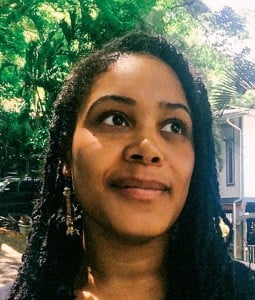 Akiemi Glenn is executive director of the Pōpolo Project, a local nonprofit that creates forums to address issues of interest to the local Black community and to educate the broader community. She says she has seen a number of businesses, nonprofits and government agencies use the international Black Lives Matter protests to start conversations in the workplace about diversity and inclusion.
Akiemi Glenn is executive director of the Pōpolo Project, a local nonprofit that creates forums to address issues of interest to the local Black community and to educate the broader community. She says she has seen a number of businesses, nonprofits and government agencies use the international Black Lives Matter protests to start conversations in the workplace about diversity and inclusion.
“I have been really interested and encouraged to a certain degree to see organizations that I don’t think have ever, ever, ever really thought about inclusion and diversity as something other than the kind of HR buzzwords that they’ve become … they’re actually starting to think in different ways,” she says.
“And I don’t know how far they’ll go in their individual organizations, but I think the fact that we’re having an international conversation about this stuff is really important.”
Whitehead adds that it can be challenging for an organization to open the floor to these types of conversations and initiatives when legal and HR teams have traditionally taught leaders to keep sensitive subjects out of the workplace and only talk about work-related projects and ideas. Leaders, Whitehead says, have to check that philosophy and be willing to have conversations that are more difficult and personal because people bring their whole selves to work.
Systemic Changes
A company’s culture plays an important role in addressing implicit bias because it sets expectations about what is valued, Levinson says.
“Companies that tend to have environments that reinforce existing societal challenges or societal biases tend to have more trouble than companies that have egalitarian value systems,” he says.
And a culture of bias can be reinforced through things outside of policies, such as when a company employs a disproportionate number of people who graduated from a certain school or when the employees who stay on with a company as others are leaving tend to disproportionately be from one type of background, Levinson says.
One way organizations can start to address this is by keeping track of who’s there and who’s not. He says that is “central to understanding how your corporate culture might manifest in ways that are less optimal for your business and disproportionately negatively impact members of certain groups.”
Professors, for example, can keep track of who they invite to be their research assistants, Levinson says. They might not see any trends in their selections for, say, the first four years, but they might after five or 10 years.
“If you don’t have the ability to reflect upon what you’ve done in the past, then you can’t catch yourself when you’re making decisions that are less optimal for the organization,” he says.
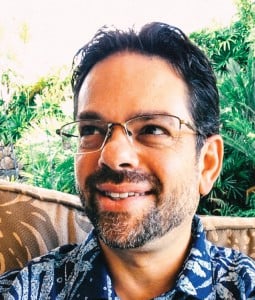 Another way an organization can reduce the influence of implicit bias is to have human resources remove from resumes names and any information that can hint at a job applicant’s race, gender and ethnicity before sending them on to hiring managers. Makana Risser Chai, an attorney, trainer and HR consultant who teaches courses on creating respectful workplaces, says that many online HR systems enable organizations to filter out information on resumes.
Another way an organization can reduce the influence of implicit bias is to have human resources remove from resumes names and any information that can hint at a job applicant’s race, gender and ethnicity before sending them on to hiring managers. Makana Risser Chai, an attorney, trainer and HR consultant who teaches courses on creating respectful workplaces, says that many online HR systems enable organizations to filter out information on resumes.
It can also be helpful if multiple people are involved in hiring and other employment decisions, she adds.
American Savings Bank uses panel interviews to make sure diverse voices are involved in vetting candidates. “It’s not the stated purpose to avoid someone’s unconscious bias, but that is the result of it,” Whitehead says. “When you have a diverse group picking teammates, you’re getting a diverse point of view and you actually are negating anyone’s personal unconscious bias.”
But for this to work, the Pōpolo Project’s Glenn says, the people involved in decision-making need to have reflected on their own biases and be able to identify biases in others.
She recalls being involved in a hiring decision while working for another organization several years ago. The candidate was from the Mainland and had a Black spouse, and some people involved in hiring made a remark that the candidate’s husband would probably not want to stay in Hawai‘i and would instead want to move to a place with a larger Black community. She says those individuals were not trying to be malicious; they were probably thinking about organizational sustainability and wanting to find someone who would be happy in the role.
“But at the same time, they may have inadvertently discriminated against a very well-qualified candidate because of her association with someone that they didn’t think would be happy here, someone that they hadn’t even met and certainly wasn’t even being interviewed,” she says.
Diversity committees can also help keep managers and leaders accountable, Risser Chai says: “I had always thought having a diversity committee or action group or whatever was kind of window dressing, but researchers have found that if managers have to report to the diversity committee about their promotion decisions or pay decisions, they look at themselves more closely and they start checking themselves more closely to see is there some kind of bias going on here in my decision-making.”
Keohokalohe cautions that leadership has to be involved in these committees for them to be effective. Some of the best examples, she says, are the committees in which C-suite leaders are invested, actively involved and championing the committee’s work. And those committees, she says, need to have budgets, goals and measurable outcomes to move their organizations forward.
Northwestern Mutual Hawai‘i was recognized in Hawaii Business Magazine’s 2020 Best Places to Work list as the top company in Hawai‘i for LGBTQ+ Equality. Jamie Delgadillo, managing director for Northwestern Mutual Hawai‘i, says his office and the overall company have to be cognizant about their diversity efforts. The financial services industry nationally is dominated by men, he says, so one of the company’s initiatives is to help more women become successful financial advisors.
“We had to make sure that we weren’t lax around that,” he says, adding that the company couldn’t just assume its workplace would be diverse just because its market is.
He adds that building a diverse and inclusive organizational culture is foundational to building a successful business – though it’s challenging work.
“It’s not something you ever arrive in,” he says.
“I think it’s going to be an ongoing thing … to continue to work to evolve and make sure that we’re paying attention and building the type of organizations and cultures that will make us relevant in the marketplace for years to come.”
More Work to Do
The Hawai‘i Civil Rights Commission’s Hoshijo writes in an email that efforts to address implicit biases shouldn’t stop in the workplace.
“Race, sex and gender, and ancestry/national bias cannot be effectively addressed in the workplace without addressing racism, sexism, homophobia and anti-immigrant biases more broadly,” he says. “We all bring our biases, conscious and unconscious, to work. But those biases affect every aspect of American life – employment, housing, health, criminal justice, etc.”
A&B’s Benjamin cites a tagline that reflects his desire to let employees lead the conversations around social justice: “Join the movement, not the moment.”
“I think we as leaders have a responsibility to make sure that we do something with this energy, and make it a movement and join the movement, not just be part of the moment by putting out nice quotes and platitudes but actually trying to follow up with real action,” he says. “And so by inviting my employees to help set that agenda, I think that we can really identify priorities that are important to them and that will benefit the community.”
A&B’s priorities, as identified by its employees through the company’s social justice forums, are to continue to pursue the company’s initiatives around pride, women’s leadership and sustainability; to look at employment practices, mentorship programs and advancement opportunities to ensure that the company is promoting diversity; to remove barriers for disadvantaged populations so they can advance in the company; and to proactively look for social justice-focused charitable causes for the company to support.
“If you truly want to have all groups and classes of people advance to the highest levels of your organization, you have to be very conscious about identifying and removing barriers,” he says.
What to Do if You’re Called Out for a Microaggression
A microaggression is defined in the Merriam-Webster dictionary as “a comment or action that subtly and often unconsciously or unintentionally expresses a prejudiced attitude toward a member of a marginalized group (such as a racial minority).”
Here’s what to do if someone points out your microaggression:
1. Apologize.
“I think apologies are always a great way to start,” says Rebecca Stotzer, professor and director of distance education at UH Mānoa’s School of Social Work.
It takes a lot of humility to not have an immediate emotional reaction or get defensive, she says. After all, it’s hard to hear that someone is telling you that you need to look at your behavior.
It’s also possible that the person calling you out for a microaggression is wrong and taking offense at something most people wouldn’t find offensive. Stotzer says in any case the best general response is to say, “I hear what you are saying and appreciate that you feel you can engage in this type of conversation.” That can at least be a starting point for a conversation.
2. It’s OK to say, “I need to take a moment and think about what I said.”
Microaggressions can be a result of implicit bias or they might simply be a result of ignorance, Stotzer says. In either case, it’s OK to take a moment to yourself and process what you said and how you need to address it.
Makana Risser Chai, an attorney, trainer and HR consultant who teaches courses on creating respectful workplaces, has a recommendation if you’re the person addressing someone who committed the microaggression. She says it’s important to use words of inclusion when alerting someone to their microaggression, rather than “calling someone out” because people won’t change and learn from their mistakes if they’re attacked. This idea, she says, came from a New York Times op-ed written by Loretta Ross, an expert on human rights, racism and women’s issues.
“Rather than calling people out and saying, ‘That was racist,’ instead we can say, my favorite line is, ‘Oh I’m surprised you said that,’ ” Risser Chai says, “because usually I am surprised that they said whatever they said, and I also usually can’t even think of what to say. But I’m not accusing them of anything. And this way we can start a conversation.”
3. Find resources about what you need to work on and educate yourself.
“That gets a little bit tricky, moving from that immediate moment to then what to do about it because that’s where we’re seeing some pushback,” Stotzer says. “It’s always like, ‘Well, talk to community members and who you harmed,’ but that puts a lot of the responsibility for your healing on those community members.”
Stotzer says people can do a lot of the initial legwork themselves – she suggests searching for resources online, for example – to figure out where they went wrong. “And then ask more maybe refined questions or specific questions of community members, rather than always expecting that they’re going to explain (to you) the basics of how your behavior was harmful.”
